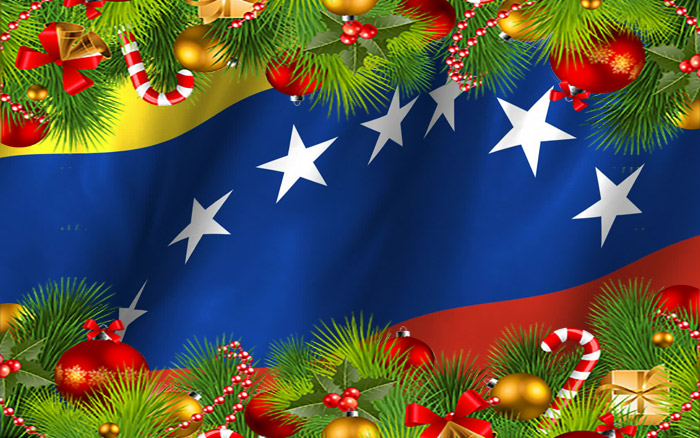In Venezuela, Christmas is celebrated on December 24th.
Christmas in Venezuela is a vibrant and joyous occasion, filled with unique traditions and cultural significance. Here's a glimpse into how Venezuelans celebrate this special time of year:
Christmas Eve, or "Nochebuena," is the heart of the holiday season. Families gather for a festive meal featuring traditional Venezuelan dishes like hallacas (cornmeal dumplings filled with meat and vegetables), pan de jamón (ham bread), and pernil (roasted pork).
Nativity scenes, or pesebres, are a central part of Venezuelan Christmas celebrations. Families often create elaborate displays, often competing with one another to create the most beautiful and detailed scene.
Gift-giving is a beloved tradition in Venezuela. Children eagerly await the arrival of San Nicolás (Saint Nicholas) or Papá Noel (Santa Claus), who brings presents on Christmas Eve.
Caroling, or aguinaldos, is a cherished custom. Groups of carolers, often children, go from house to house singing traditional Christmas carols and receiving treats in return.
The holiday season in Venezuela culminates with the Feast of the Epiphany, or "Día de los Reyes," on January 6th. This day is marked by parades, gift-giving, and the consumption of rosca de reyes, a traditional ring-shaped cake.
With its unique blend of religious traditions, cultural customs, and festive spirit, Christmas in Venezuela is a truly unforgettable experience.

Christmas in Venezuela is a joyous and deeply religious celebration. It’s a time for families to gather, exchange gifts, and savor traditional delicacies. The festivities are marked by a unique blend of religious rituals, cultural customs, and vibrant decorations.
One of the most prominent features of Venezuelan Christmas is the elaborate pesebres or nativity scenes. These detailed displays often include figurines of the Holy Family, shepherds, wise men, and animals. Homes, churches, and public spaces are adorned with these beautiful creations.
Christmas Eve, or Nochebuena, is the most important night of the holiday season. Families gather for a special dinner featuring traditional Venezuelan dishes like hallacas (cornmeal dumplings filled with meat and vegetables), pan de jamón (ham bread), and pernil (roasted pork). After the meal, many families attend midnight mass, a solemn and joyous service that marks the birth of Jesus Christ.
In Venezuela, it's believed that the baby Jesus, rather than Santa Claus, brings gifts to children. On Christmas morning, children wake up to find presents left under the nativity scene.
A unique Venezuelan tradition is the Paradura del Niño. During this custom, the baby Jesus figurine from the nativity scene is paraded through the streets, accompanied by prayers and songs. The figurine is taken to different homes, where it is welcomed with festivities and offerings.
The Christmas season culminates in the celebration of the Epiphany, or Día de los Reyes Magos (Three Kings' Day), on January 6th. On this day, children receive gifts from the Three Wise Men, who are believed to have brought gifts to the baby Jesus.
With its blend of religious traditions, cultural customs, and festive spirit, Christmas in Venezuela is a truly magical experience.
Try out the other sections